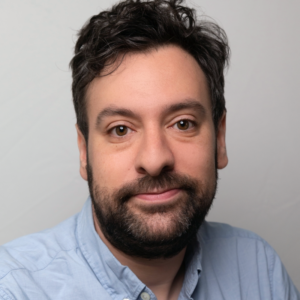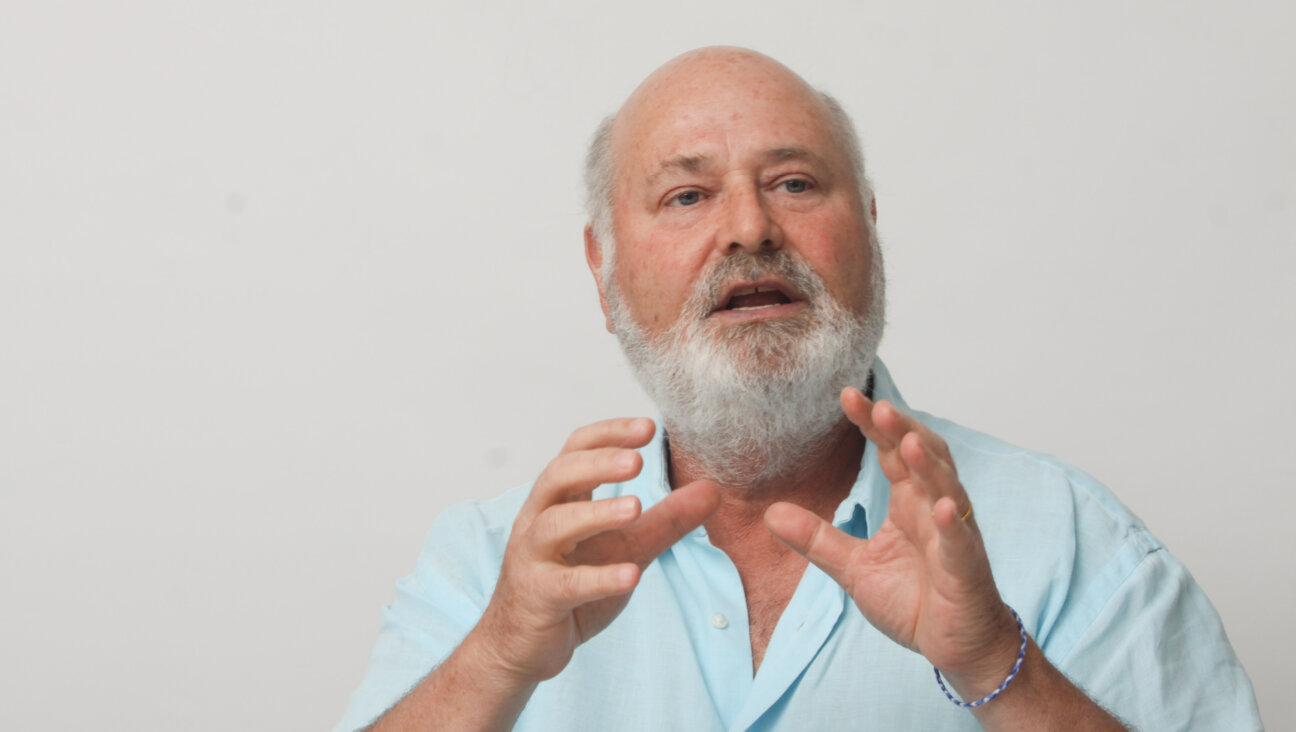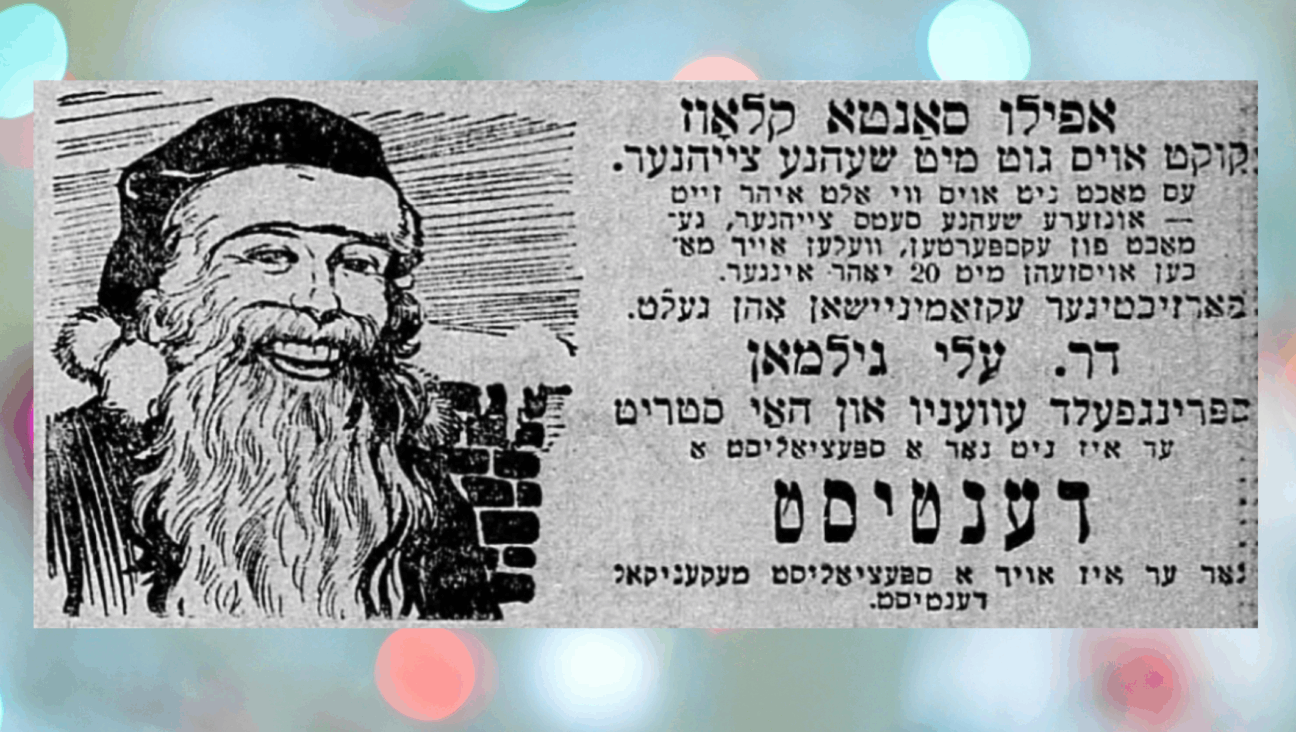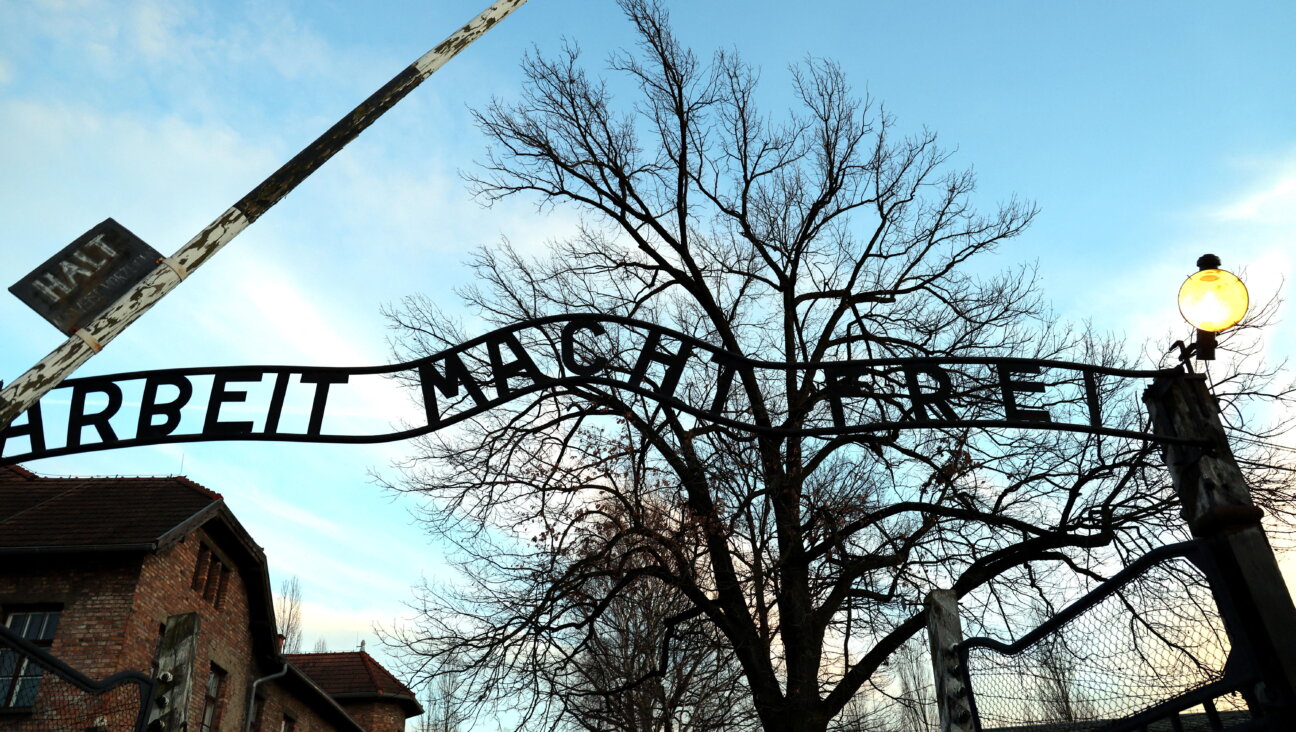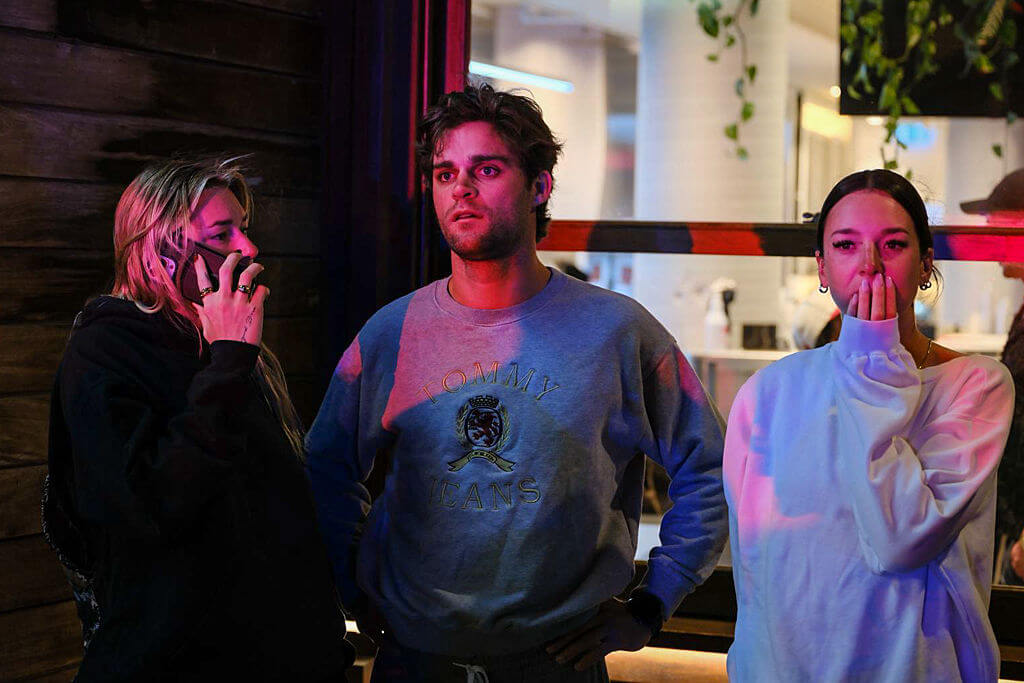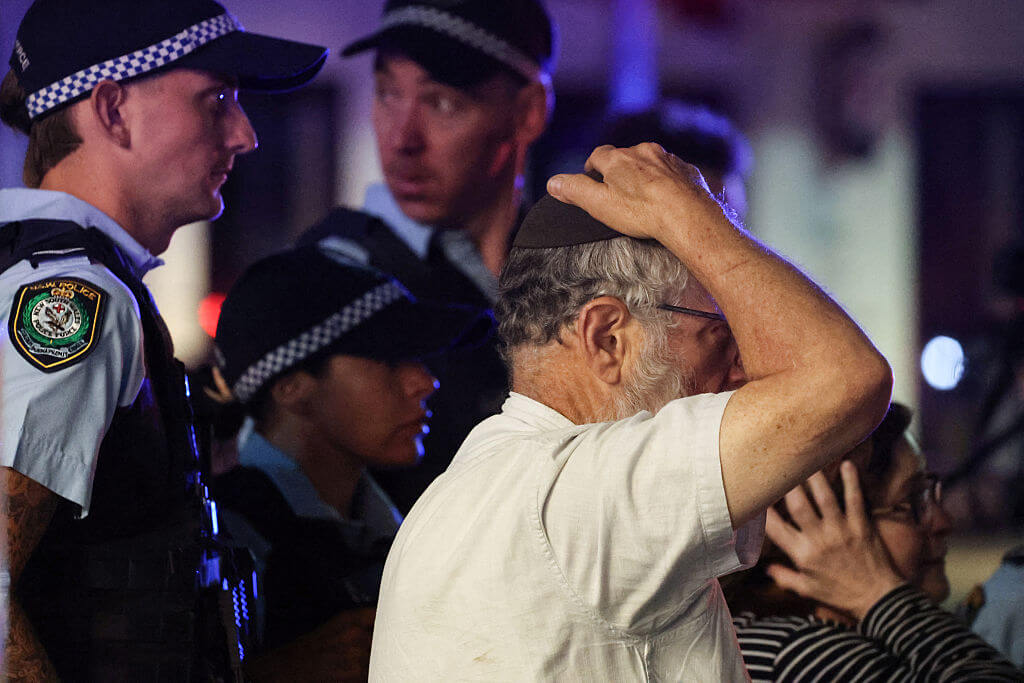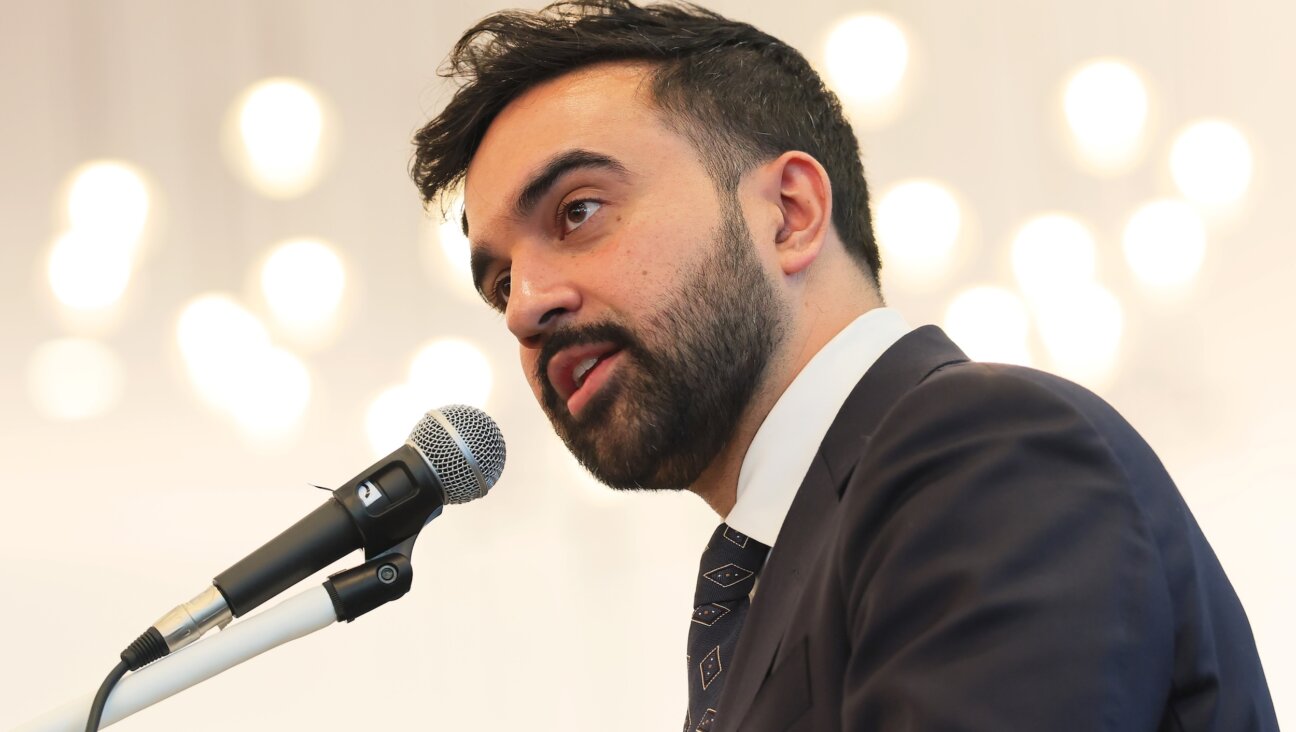How the master builder behind ‘The Brutalist’ was inspired by her hometown synagogue
Oscar nominee Judy Becker talks about bringing László Tóth’s designs to life
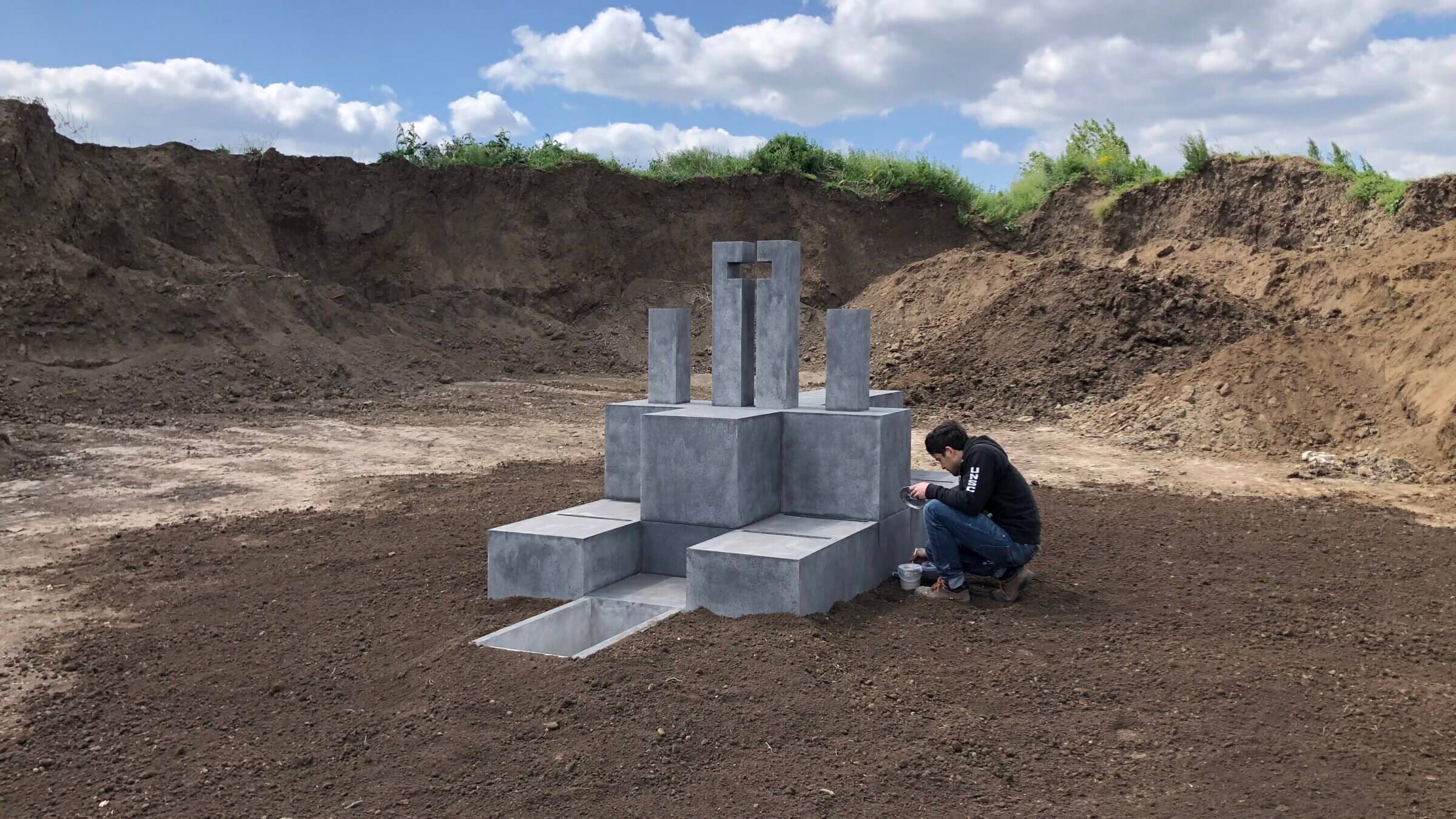
Judy Becker’s model of the Van Buren Institute. Courtesy of Judy Becker
Judy Becker, the Oscar-nominated production designer for The Brutalist, says she liked brutalism before it was cool.
At 7, when other kids were scrawling chimney smoke curlicues and stick figures, she would draw imaginary interiors with cracks in the walls and cords dangling over refrigerators and marvel at her architect uncle’s models. Becker would go on to build sets for films like Todd Haynes’ historical romance Carol and David O. Russell’s Abscam comedy American Hustle.
But Brady Corbet’s film, for which she earned her second Academy Award nomination, was her most monumental job, and in many ways her most personal.
Following the journey of László Tóth (Adrien Brody), a Hungarian Holocaust survivor, the drama is about design, and the ways artists sublimate their lives through their work.
“I’m the closest that there is to the creative mind of László,” said Becker, who crafted the ingenious mid-century furniture, shabby Philadelphia interiors, tony drawing rooms and the sprawling concrete complex — a community center called the Van Buren Institute — that László agonizes over for most of the film’s runtime.
Becker, whose work was hailed by architect Daniel Libeskind, is not a trained architect, a fact she said other production designers shamed her for early in her career. But her designs convincingly suggest the work of a Bauhaus-trained master, particularly the Hungarian-Jewish brutalist Marcel Breuer, the strongest candidate for the real-life Tóth.
It was Breuer, in fact, whose work on a temple in her hometown, inspired a key feature of the institute.
I spoke with Becker about her process, Jewish identity and the curious role of crosses in the film. The conversation has been edited for length and clarity.
PJ GRISAR: You’ve done so much work — a lot of period work as well — but here you are having to build buildings from scratch. Was this very different from your usual process?

JUDY BECKER: It was a little different because the first thing that Brady asked me to do was to design the institute, so that we would know what we would build of it. We talked about how we obviously weren’t going to build the institute as a monumental, gigantic concrete building, but we were going to build pieces of it during the construction phase. And in order to know what we would attempt to build, we had to know what the whole looked like, in order to assure the producers that this could be done.
I had a few clues from the script, which you see in the movie, that [László] is incorporating his and [his wife] Erzsébet’s experience of the Holocaust in the building — it wasn’t specified how — and that it’s brutalist in style. It’s concrete. There’s a use of marble. They’re just very general things. And I went home to try to crack this puzzle.
I know you were using some of the models with a tiny camera. How much did you actually build?
When you see the construction site, we built that stuff, so it’s like columns and stairways going into the ground, and there’s the quarry pit and pieces of the building. And then we built a full model of a smaller scale. It was about nine or 10 feet long, and we’d build an exterior and an interior of the institute, which was completely drawn up like a real building and it was treated to look like concrete.
I would have loved to have done a whole trip through the building with a camera, but you did see inside it and you see the outside too. It was really fun creating a model, and not doing it all with CGI. And I think that that was one of the things I loved about working on the movie, was that it was just a commitment to doing as much in camera as possible.
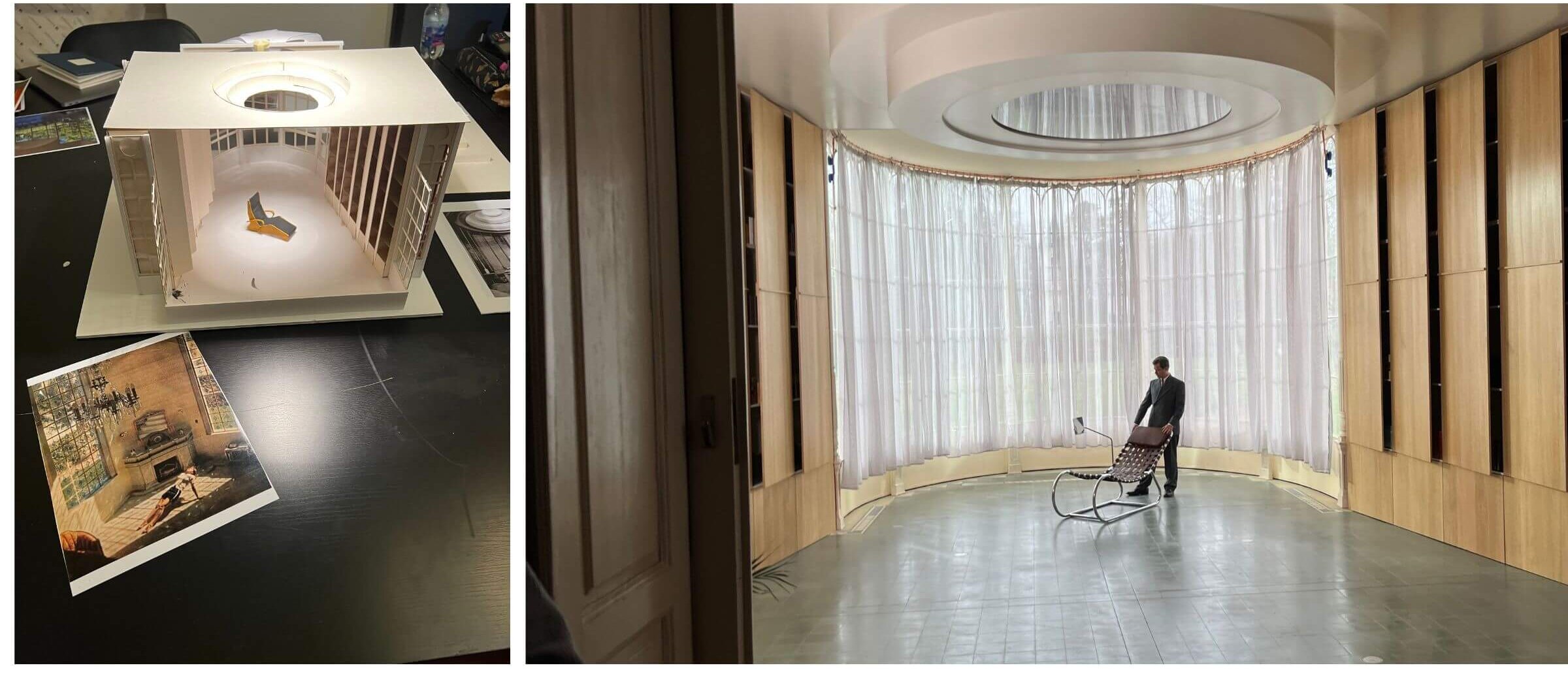
One point of inspiration was inspired by a synagogue in Scarsdale that was a Marcel Breuer. Tell me a little bit about that.
I grew up in Scarsdale. I’d been to services a couple of times when I was a kid — they were in a congregational church basement. I was really interested in architecture as a child — all facets of it. When I say a child, I mean a young child, like 5, 6, 7. I loved my doll houses. And my uncle was an architect, and when we went to his house, he had architectural models, and to me, they were like doll houses, but I wasn’t allowed to play with them.
My mom told me about this synagogue [Westchester Reform Temple] that was shaped like a Star of David, but you couldn’t tell unless you were looking at it from above. I just found that so fascinating that you couldn’t tell, but it was there. And that stayed with me.
So when I was thinking about the institute, I was thinking a lot about how László had been surrounded by signs of Christianity in Europe. And I was specifically thinking about the mullions that you see on the windows in Central and Eastern Europe, which are shaped like a cross. I mean, it’s everywhere. And then he’s in a camp, and then he comes to America, and he’s asked to participate in church services at the homeless shelter. And then he’s asked to build a community center [with a church in it]. I really was thinking maybe I could incorporate a Star of David into the church design, and no one would know except for László. So it would be this subversive act.
So I was trying to do that, but it just wasn’t working. And so then I thought, I’m gonna incorporate the cross, but like, in a big way. So it’s very clear that he’s making a statement about what he’s being asked to do. That he’s being asked to design this Christian monument. And then the whole building is going to look like a crematorium. It’s almost like the emperor’s new clothes. Here’s your beautiful, modern building that is basically a giant cement factory crematorium on this hill, and that’s what I’m giving you, Harrison Van Buren.
When I was designing it, that’s what I was thinking,
The cross shows up in that design — notably in the light feature — but then it also shows up in the background of places László’s turned away from, at that church pantry at his cousin’s house with the crucifixes on the wall
The church pantry, it wasn’t scripted that there was a cross-shaped sign. I think that Brady showed me a reference that had a really insane one that was from Philadelphia in the era. I mean, it was so insane that if you put it in a movie, you wouldn’t believe it. But the one that we did put in was a little influenced by a church that’s near my apartment building in New York. Attila says they’re Catholic, of course they’re going to have one.
I did try to work them in as much as I could, but without it being really obvious. Then other times I had to take them away, because the windows did have those crosses, but we’re in America. In László’s apartment in New York, we had to disguise them.
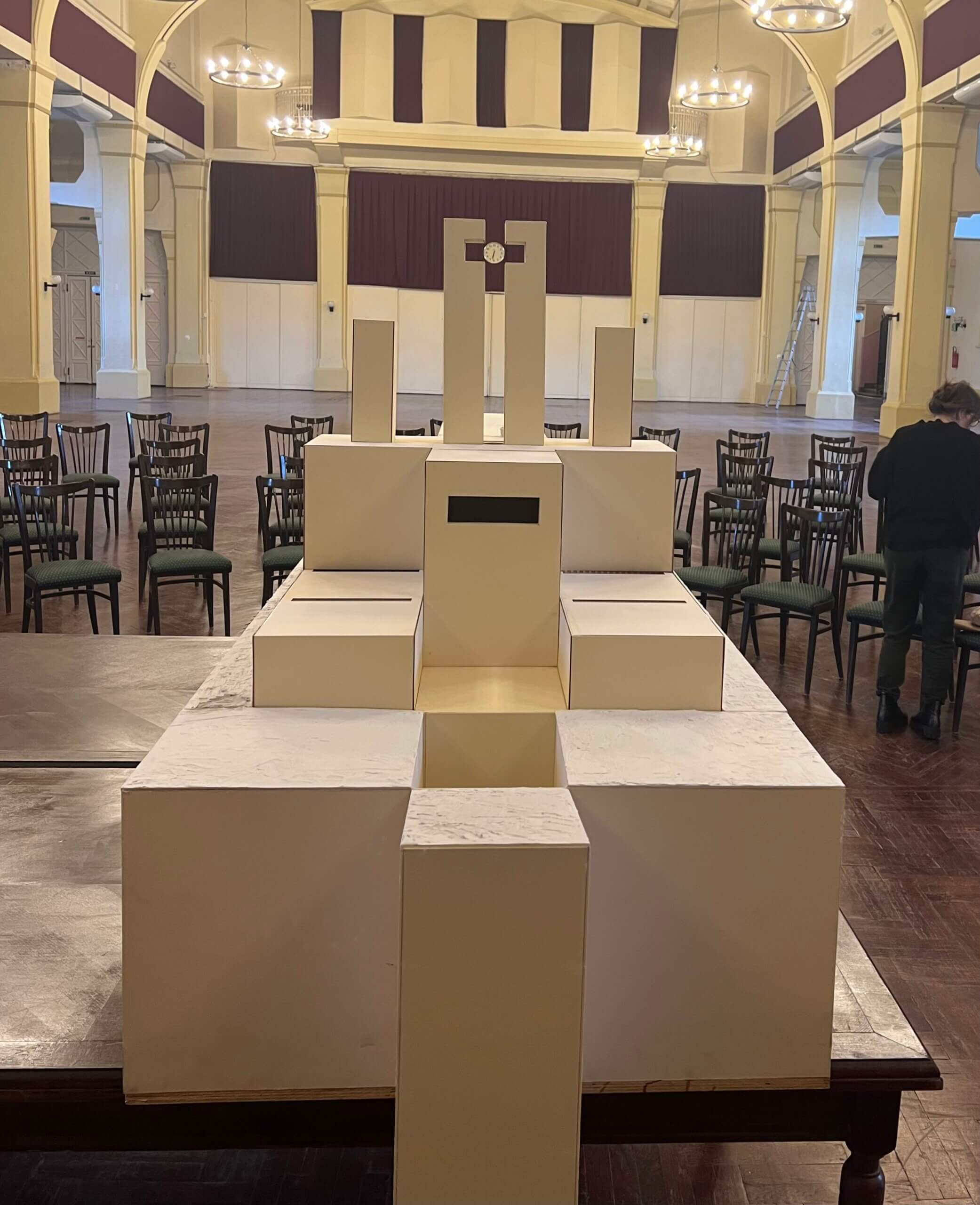
Because you were filming in Hungary, right?
Hungary, yeah. Everything except the Ferrara marble. And the Statue of Liberty was the real statue. And Venice in the canals was the real Venice. But not the Biennale‚ that was in Hungary. That was at the big synagogue in Budapest.
That’s amazing. Talking about the cousins again, there’s such a contrast between this fusty American-style furniture Attila sells and László’s work. I’m wondering how you thought about the styles with ideas of assimilation, and how you could convey that.
I wanted Attila’s store to seem as American as possible. Partly because we were not shooting in America. It’s such a typical style for that period. I mean, it’s mid-century furniture, but it’s not mid-century modern furniture, which happened to be very, very popular at that time. You can still buy it. I knew that we could find it very inexpensively. The shipping was the expensive part.
I fully understand the Attila character, in a sense, maybe not the conversion to Catholicism, but my ancestors came to America around 1900. The ones I knew came as babies, really, and I knew my great-grandfather, and I once asked him where he was from. I knew he was from Romania, but that’s all. And he wouldn’t tell me. He said “You don’t want to go there. They hate the Jews. You don’t want to go there.” And he wouldn’t tell me, and I never found out. So now I never will.
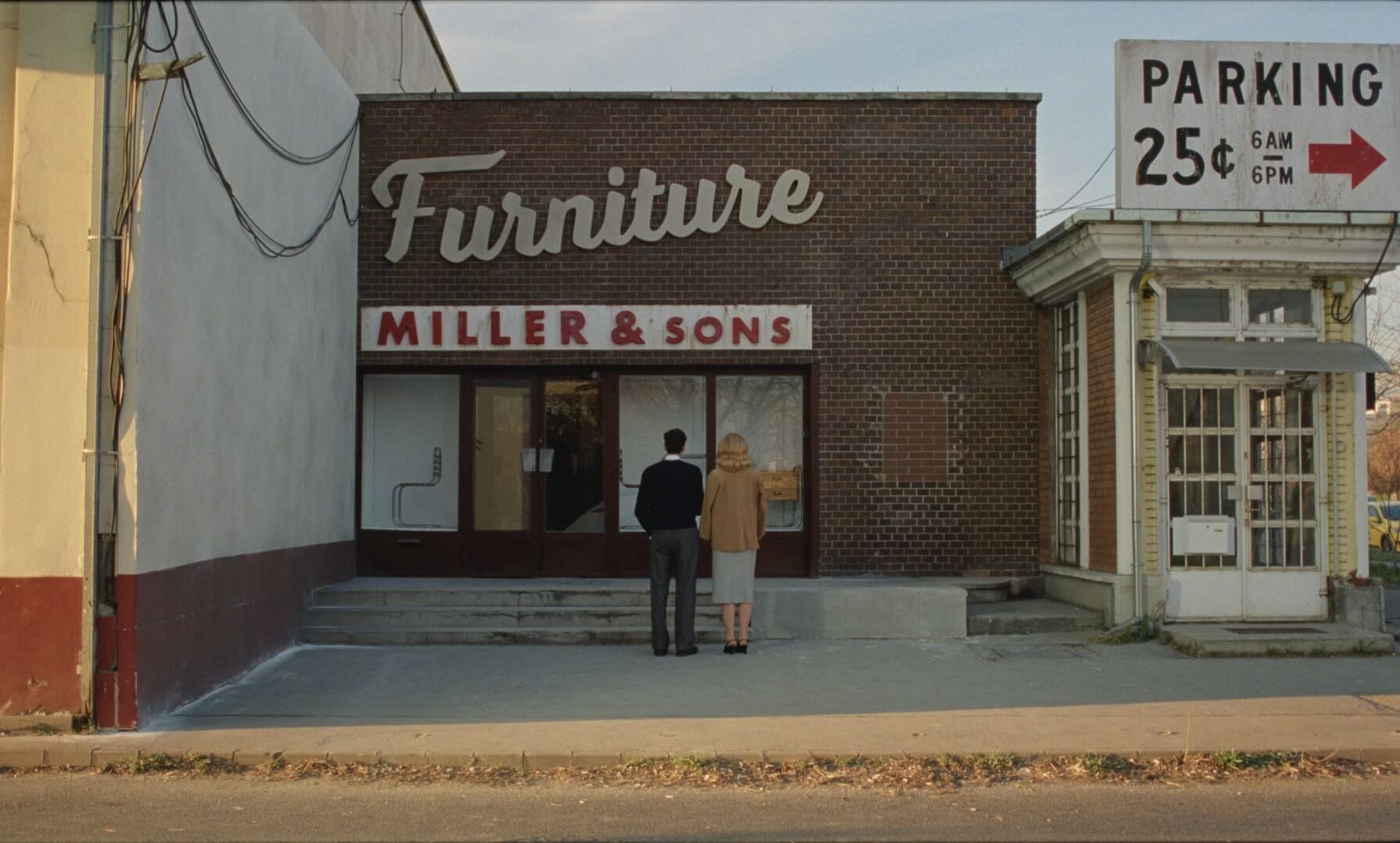
I understand that desire to leave, to erase that past, because it wasn’t pleasant. They were poor. They came to escape persecution, and they wanted to start fresh, and they did fine when they started fresh. It was a typical positive immigrant story. They had a positive experience, because they were not successful in Europe, and they were dealing with a lot of persecution, and they didn’t live through World War II in Europe. They came here.
For László, who also wants to erase the past, it’s a little bit different. He lived through a horrific experience. It doesn’t leave somebody, I don’t think. And so for him, that past is something that he both wants to memorialize and also leave behind and move forward. I think that that’s what that style of architecture that he embraces does.
So he doesn’t want to incorporate historical details into his buildings. He wants to start something new and maybe it seems harsh or brutal, but that’s what moving forward is, in a sense. To me it makes total sense psychologically for him. I’m just very attracted to it, that kind of strong, maximal minimalism.
Did this feel more personal for you as someone who is Jewish? Referencing the camps?
When I was trying to work the architecture of the camps into the building. I don’t know if anyone could look at the images of the victims, and not feel horrified and feel it personally. But for me, it was just devastating to see. I’ve seen a lot of those images before, but it’s hard to look at them, really hard. I really felt like I had been there myself. And that’s obviously not true, but that’s how personal it felt.
I do feel like I can identify personally with a lot of those experiences, both from the assimilated side and the not assimilated side and what antisemitism feels like, because I’ve certainly experienced it many times in my life. I think that a lot of people don’t realize how ubiquitous it is, even with people that you’d be surprised to experience it from.
I think it was personal, but it was also personal on a lot of other levels too, like my love for architecture. Working with Brady was, I’d say the best experience I’ve ever had, or one of the best, creatively. So in so many ways, it was a great personal experience, and the hard, emotional parts of it also made it one of the best.
